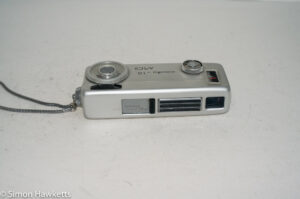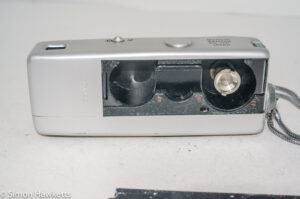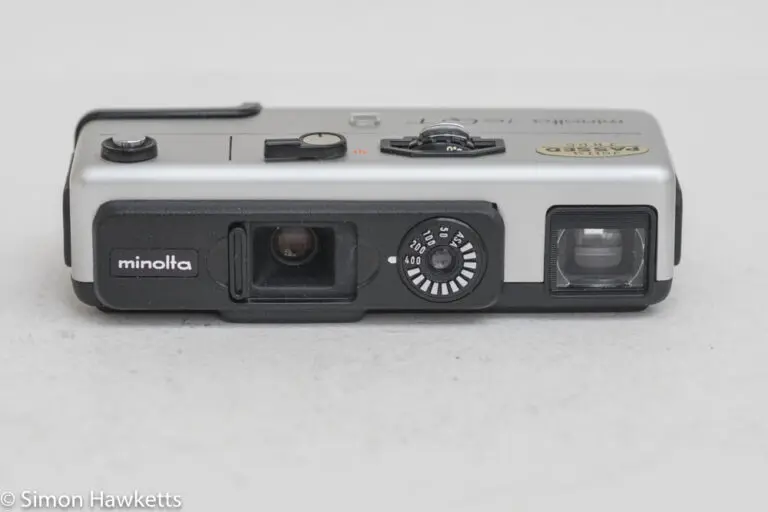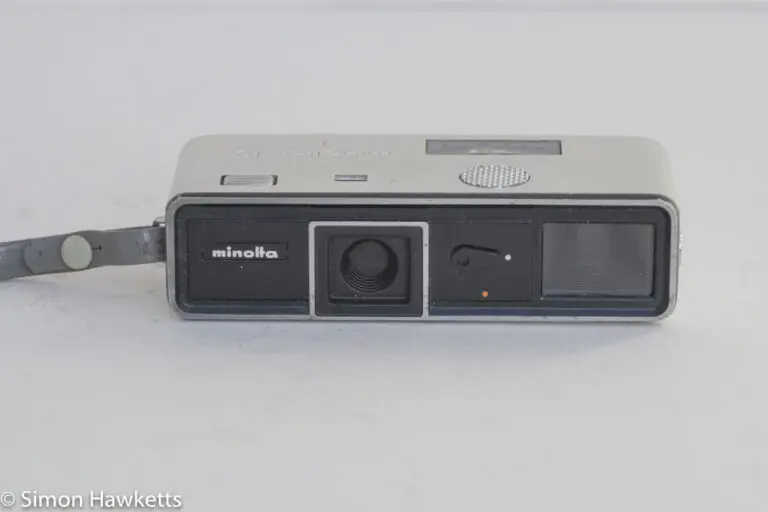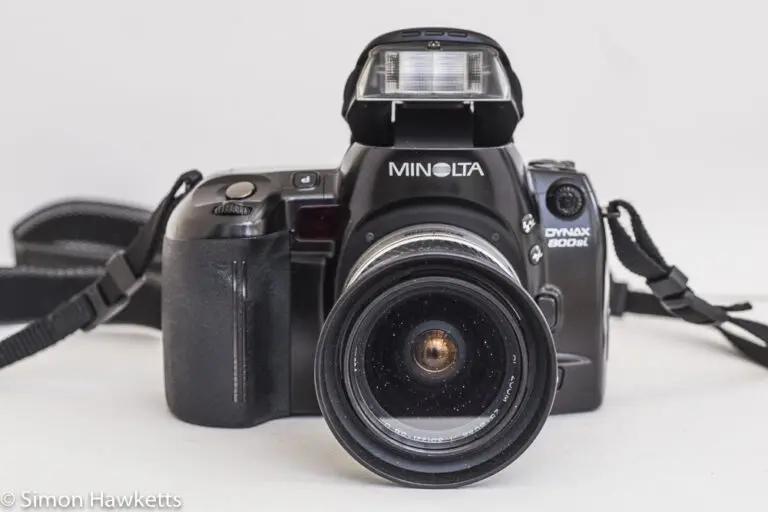Minolta 16 MG miniature 16mm camera
The Minolta 16 MG is the third 16 mm miniature camera from Minolta that I’ve acquired, and this model sits between the 16Ps and the 16QT in terms of features. As with all the other cameras in the series, it takes a small 16 mm film cartridge and is tiny enough to carry about for easy snapshot use.
Minolta 16 MG Images
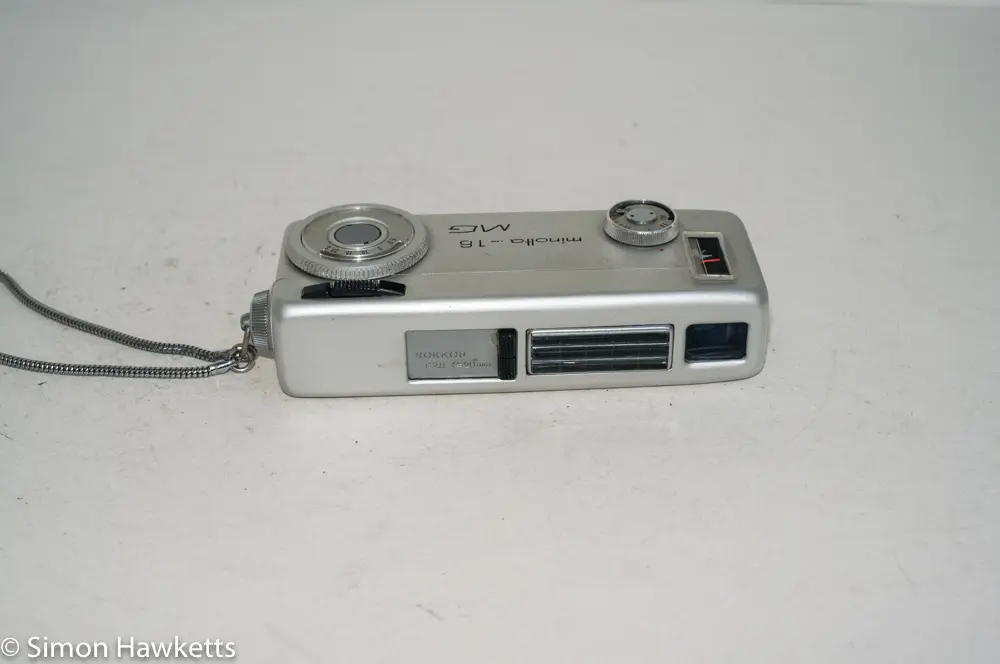
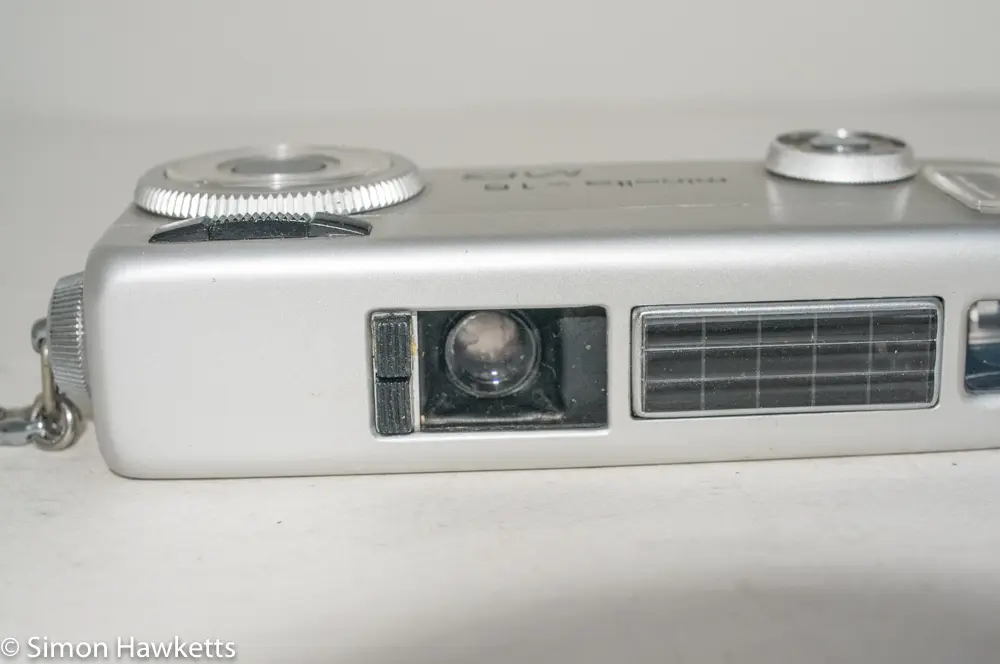
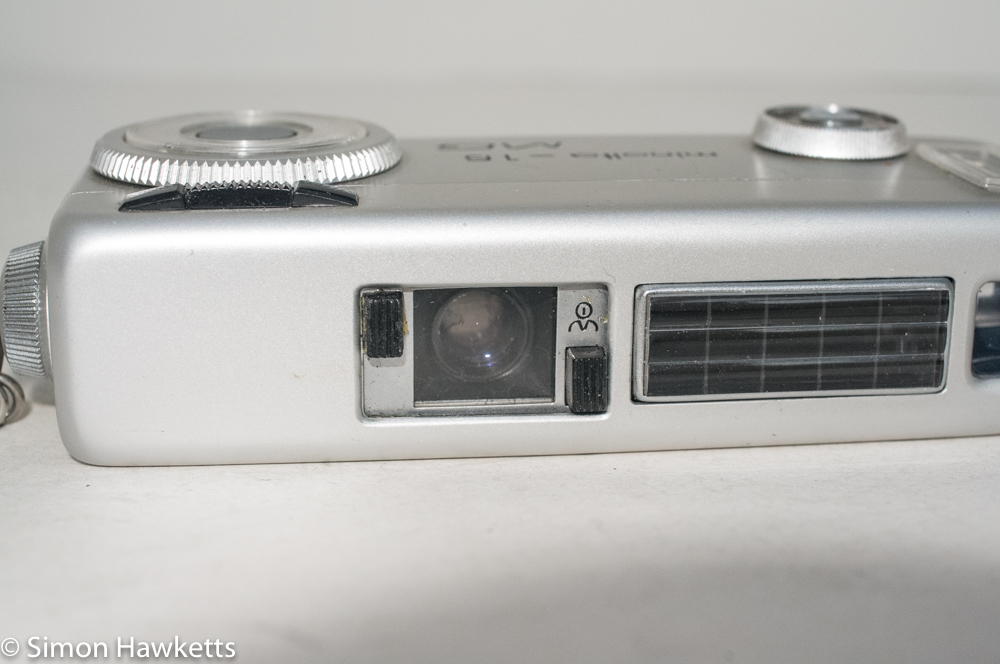
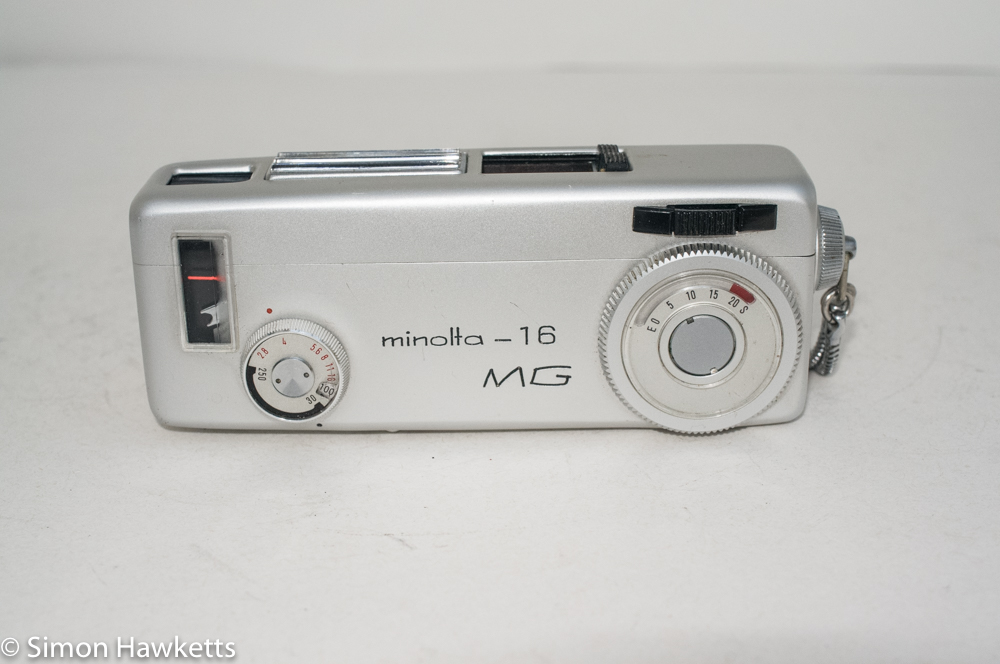
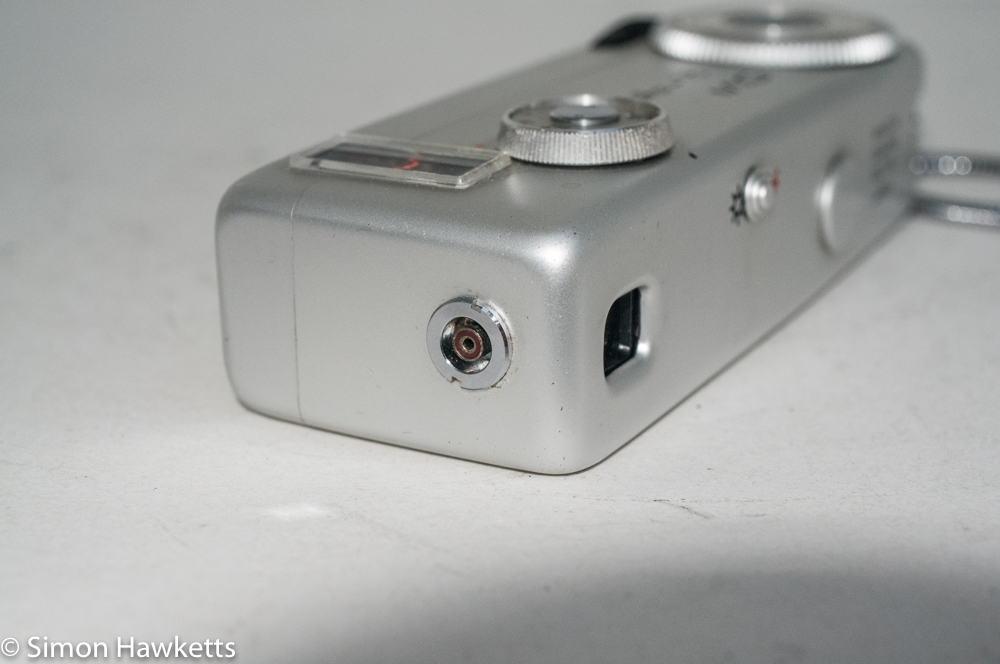
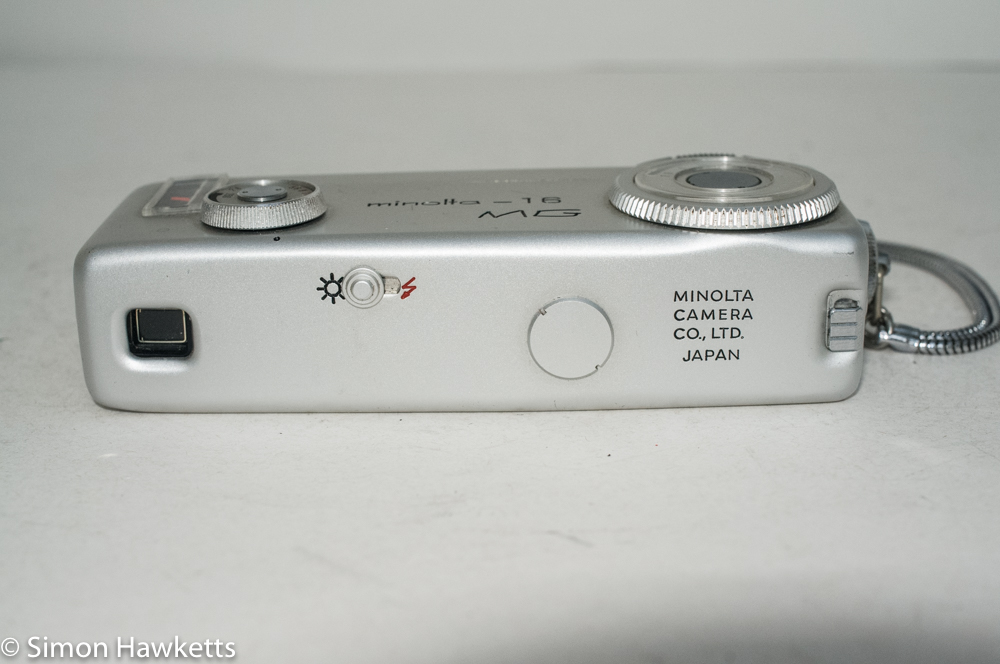
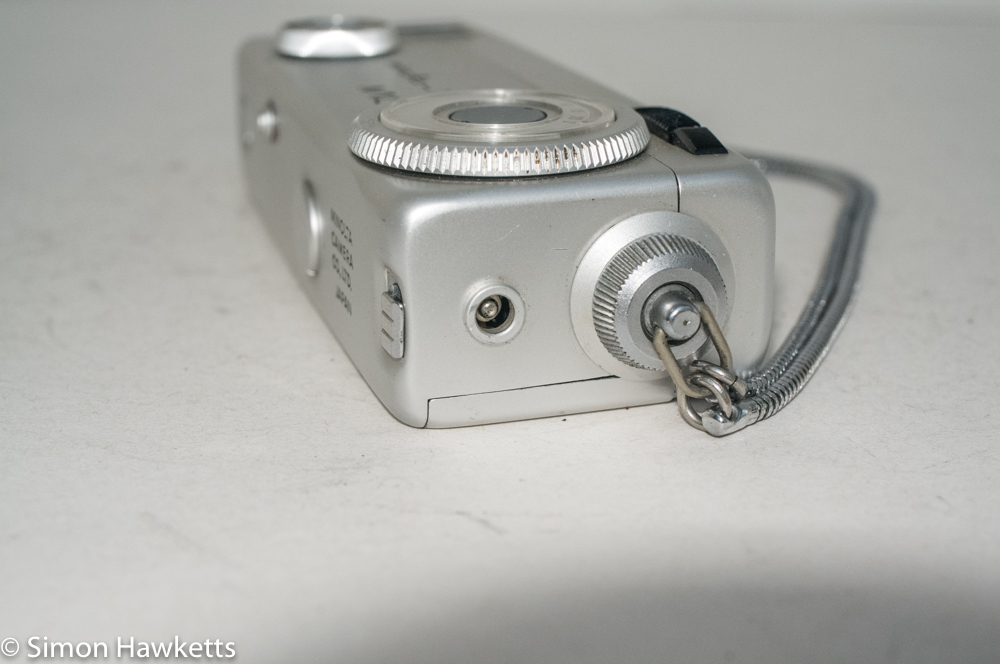
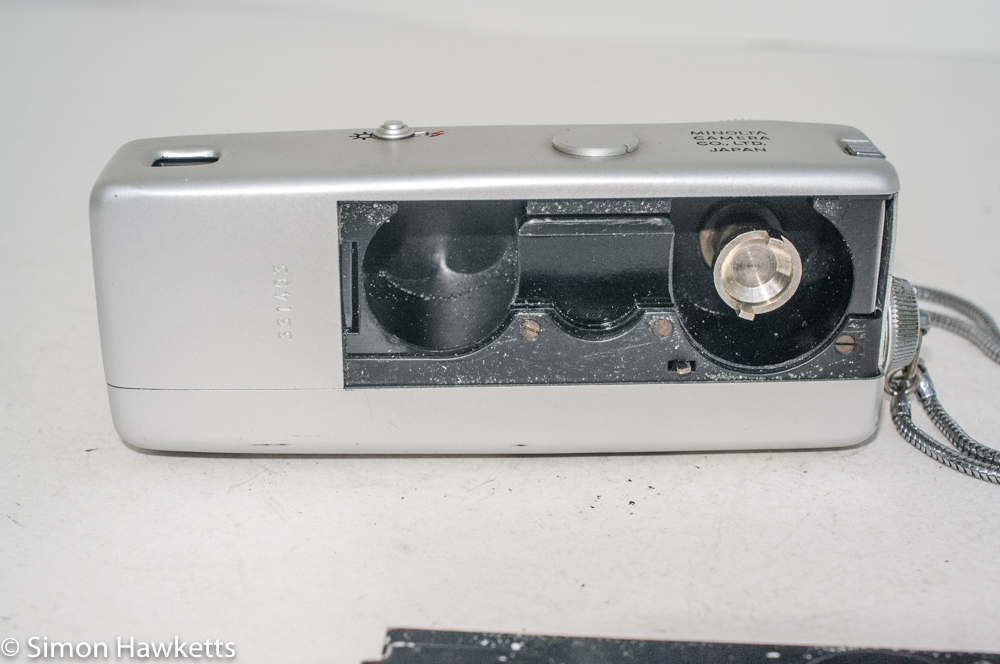
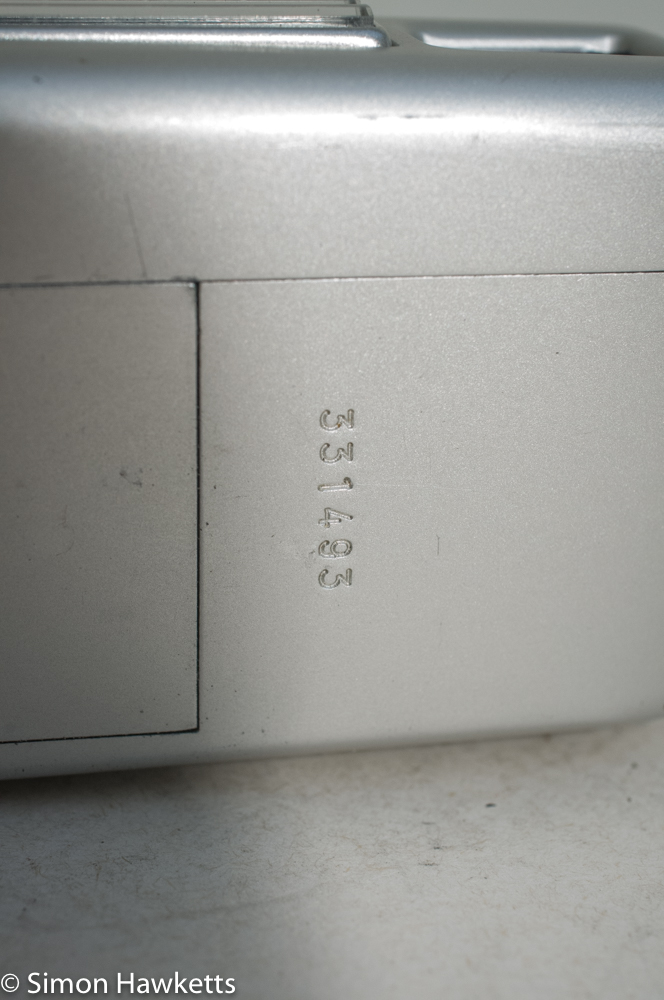
My Minolta 16 MG Camera
This camera was bought simply to add to the 16 mm miniature cameras I own and because it was very cheap. A paid a couple of pounds to buy it in a set with another Minolta 16 Ps and a flash unit, although the flash doesn’t seem to fit either camera.
Since I already have a Minolta 16 Ps, I will probably check that it works and then resell it on eBay to recoup some of the costs.
The 16MG seems to be in top condition with only a few surface marks on the aluminium case.
The shutter seems to work at all speeds and the aperture as well seems to open properly, at least as far as I can tell from observing the camera. The real test will come when I put a film through the unit.
Minolta 16 MG description
All the Minolta 16 series are similar in that they are viewfinder cameras with, for the most part, fixed focus lenses and simple operating controls, and the MG is no different. The body shell is made of a solid piece of aluminium, which not only makes the camera quite rugged, but also gives it a very sleek and attractive look.
The film advance is a large wheel on the top of the camera, easily turned with the thumb, and the frame counter is built into this film advance. In common with the Ps it is a count-down frame counter.
On the end of the camera is a socket and a threaded hole. This is the connector and attachment point for the flash, and when the flash isn’t connected the threaded hole is available for the nice silver chain wrist strap or a tripod.
The MG is equipped with a match needle, coupled light meter with the display on the top of the camera. This is slightly more inconvenient than having a display in the viewfinder, but it is quite easy to use.
When I first tried the camera out, I assumed it was like the Ps model and had only two speeds – flash sync and fast. However, after some trials with the light meter, I have found that the light meter adjuster changes both the shutter speed and the aperture. The range is between 1/30th and 1/250th for the shutter and f/2.8 to f/16 for the aperture. It isn’t possible to select individual combinations, but the adjustment available would cover a large range of light levels.
On the back of the 16MG case is a switch to set the shutter to flash sync speed. When this is selected, the light meter control just sets the lens aperture and needs to be set via a flash bulb lookup chart.
The lens is protected by an inbuilt cover which can pulled across the lens when the camera is not in use, and this also locks the shutter release. Interestingly, there is also a position which pulls a close-up lens in place which allows the camera to focus to about 4ft and is used for portraits.
The film cartridge is held in a compartment on the bottom of the camera, behind a trap door released with a little button on the back. To my mind, it’s a bit too easy to release this – I wonder how many shots were lost because the door opened?
As it happens, I should be able to try this camera out. I managed to find another Minolta miniature camera on sale as a set along with a couple of unexposed films which I bought, again for a few pounds.
Although the film will probably be way out of date, I should be able to fill the cartridges with some 35 mm film which I split to 16 mm and use to re-spool them. If I’m successful in that, I’ll post the results.
Minolta 16 MG specifications
- Minolta 16 MG 16mm miniature camera
- Takes Minolta 16mm film cartridge
- Picture size 10 x 14mm
- Rokkor 20mm f/2.8 lens
- Match needle metering / exposure control
- 1/30th flash sync
- Film Speed 25 to 400 ASA
- Shutter speeds 1/30 to 1/250 – automatically set
- Ser No: 331493
- Handbook available here.
Discover more from Everything Vintage
Subscribe to get the latest posts sent to your email.

